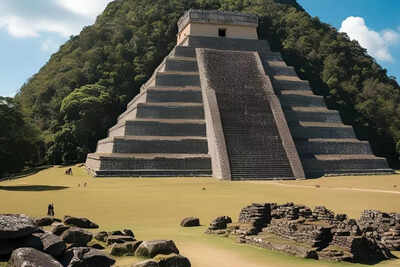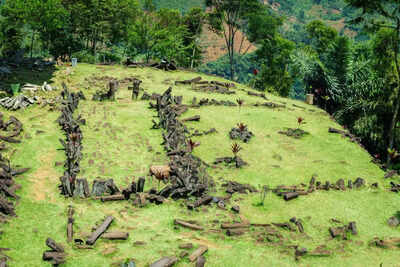Trending
Scientists discover 25000 years old pyramid and it’s not man made
Recent research proposes that the megalithic site of Gunung Padang in Indonesia might be the oldest pyramid at 25,000 years old. This challenges the belief that advanced construction started after agriculture. Critics question the validity, demanding more peer-reviewed studies.
The Guiness World Record officially finds Egypt's Djoser Step Pyramid as the oldest in the world, but a research published last year says otherwise and what you might be shocked to know is that the place has also long been mysterious for scientists and researchers.
Recent research suggests that the megalithic site of Gunung Padang in West Java, Indonesia, may not be a natural formation, but rather the world's oldest pyramid, potentially dating back as far as 25,000 years.
Gunung Padang, located in the Cianjur Regency of West Java, has been celebrated as a sacred site by local people for centuries. The terraces are covered with huge rock formations that have been linked to rituals and ceremonies.

By applying some systematic methods such as ground-penetrating radar (GPR), electrical resistivity tomography (ERT), seismic tomography (ST), and core drilling, they made some exceptional discoveries. Their evidence said that Gunung Padang has several layers of construction, developed in different stages over tens of thousands of years.

What does the discovery say?
The scientists have discovered four periods of construction at Gunung Padang. The earliest stage, which dates from 25,000 to 14,000 years ago, is a lava hill that has been sculpted and then altered by human beings.
Columnar rocks laid out in brick-like fashion were added between 7900 and 6100 BCE, showing the earliest structured period of construction.
More architectural changes were performed between 6000 and 5500 BCE, smoothing out the building. Lastly, advanced masonry during 2000-1100 BCE was put in, forming the site as seen today. In case these estimation dates are reliable, Gunung Padang dates back over 20,000 years before the Egyptian pyramids.

Scientists say that this site also beholds some secrets
The most interesting discovery was the presence of cavities or hidden rooms within the site. These rooms are not yet discovered, but this suggests a detailed inner design. Scholars believe these rooms may be filled with artifacts, tombs, or religious relics and can give more clues about the makers and their purposes.
Another discovery is that Gunung Padang was deliberately buried multiple times over the centuries. This could have been a step to conceal and shield the building, or it could be a sign of shifts in its religious or cultural significance over the different periods.
If Gunung Padang is truly a 25,000-year-old pyramid, then it would question the long-established hypothesis that only after the establishment of agriculture (around 11,000 BCE) did advanced construction methods develop. Then the idea that an advanced society capable of large-scale engineering existed at such an early time period is extremely controversial and counters established archaeological assumptions.
What do the critics say?
Critics say that early humans during this period were mostly hunter-gatherers with limited technological expertise. Then how did Gunung Padang's coordinated stonework, multi-layered architecture, and internal chambers exist, they ask? Who constructed it, and how systematic were they?
In 2023, the journal Archaeological Prospection presented a research paper on the site after independent experts criticised the methodology and interpretations. Non- believers argue that the research lacks sufficient scientific validation and that more peer-reviewed studies are needed.
End of Article
FOLLOW US ON SOCIAL MEDIA
Visual Stories
Tired of too many ads?







